Sustainable Mobility Matters—Spring 2022
This quarterly newsletter highlights recent projects, partnerships, and publications related to NREL's sustainable mobility research.
Subscribe to receive this newsletter via email.

Community-Centric Deployment Transforms Ideas Into Impact
Transportation decarbonization research informs decisions and processes to make our world a better place to live. The real impact, though, comes from its deployment and putting our clean transportation solutions into practice.
The National Renewable Energy Laboratory (NREL) is a global leader in transportation decarbonization research. With our immense experience and broad capabilities in on-road, off-road, and non-road vehicles—including emerging technologies for aviation, rail, and marine applications—we are busier than ever supporting the implementation of new sustainable mobility technologies and strategies.
In the United States right now, deployment of new vehicle technologies is accelerating at an unprecedented pace.
Fortunately, deployment has been integral to NREL's mission practically from day one. For decades, NREL has partnered and advised on projects alongside the U.S. Department of Energy's (DOE's) Clean Cities Coalition Network, which works in communities across the country to implement alternative fuels, fuel-saving technologies and practices, and new mobility choices. More recently, NREL also played a pivotal role in launching the Joint Office of Energy and Transportation, a collaboration between the DOE and the U.S. Department of Transportation (DOT), to deploy a national electric vehicle (EV) charging network of more than 500,000 EV chargers with a focus on corridors and communities, filling gaps in rural, disadvantaged, and hard-to-reach locations.
Rooted at the center of NREL's deployment strategy are communities—namely, participation from the people—that these activities impact. The laboratory has prioritized this engagement in new and constructive ways through projects such as the LA100 Equity Strategies study (LA100ES). LA100ES follows the Los Angeles 100% Renewable Energy Study (LA100), a comprehensive study NREL completed that found that LA can achieve reliable, 100% renewable power as early as 2035. LA100ES is a 2-year project led by NREL and partners that is bringing together LA-based energy and environmental justice organizations and stakeholders, including members of underserved communities, to ensure the path to 100% carbon-free energy is both equitable and achievable.
Enabling clean transportation technology transitions will also be a significant part of the international Net Zero World Initiative, launched by world leaders and managed by NREL, to accelerate a global energy system to net-zero-emission, inclusive, equitable, and resilient energy systems.
All this to say, it's our partnerships—guided by the voices and visions of diverse stakeholders and communities—that provide the power necessary to seize a decarbonized energy future. Are you ready to join in the momentum?
Chris Gearhart
Director, NREL's Center for Integrated Mobility Sciences

Mobility Equity Research Spans Diverse Needs of Underserved Communities
Mobility limitations mean more than difficulties getting from one location to another. They can present major impediments to securing a better job, home, education, health care, and overall quality of life. NREL researchers are working with partners in underserved communities to identify barriers and explore how energy-efficient transportation solutions can increase mobility equity. The team's interdisciplinary approach combines behavioral science with analysis, engineering, deployment assistance, and engagement in its attempts to maximize benefits at the individual, community, and societal levels.

NREL Scientist Joins United Nations Team in Identifying Opportunities To Slow Climate Change
The current intensity of climate change is unprecedented. Cities face disproportionate risks due to rapid population growth, even as their roles as infrastructure hubs provide greater opportunities for mitigation. The United Nations' Intergovernmental Panel on Climate Change recently released the third report in a series detailing the risks and realities of climate change to examine how events such as catastrophic heat waves, food shortages, and displacement of homes in these communities can be averted. NREL Senior Researcher Paty Romero-Lankao played a pivotal role in two of the reports, bridging the distance between science and real-world community action.

NREL Gets Electric off the Ground With R&D, Analysis on Battery-Powered Aircraft and Seacraft
With growing success of research and development (R&D) in EVs for the road, NREL researchers are applying their expertise to non-road transportation modes. Like EVs, battery-powered aircraft and seacraft can not only decrease emissions but also reduce noise, save money, and better connect rural communities with urban cores. Through a pair of ongoing studies—one on electric aviation in Colorado and another considering battery-powered ferries in North Carolina—NREL analyzed key opportunities and challenges to getting electric technologies off the ground.
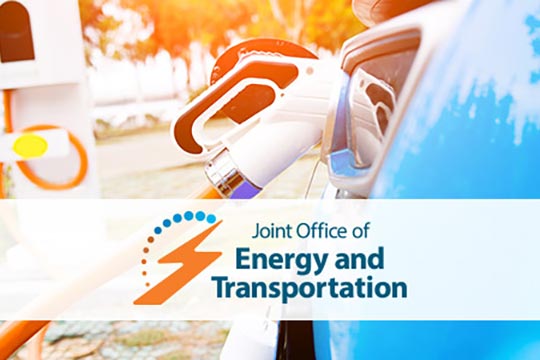
NREL Joins Interagency Collaboration Supporting Buildout of National Electric Vehicle Charging Network
Researchers are contributing their expertise in electrified transportation systems to the Joint Office of Energy and Transportation, a new federal office bringing together expertise from DOE and DOT to strategically and equitably expand EV charging infrastructure throughout the United States. NREL staff joined researchers from DOE, DOT, Idaho National Laboratory, and the DOT's Volpe Center in this effort.

Transportation Modeling Tool Informs Intelligent Planning and Control for Mobility-Service-Provider Fleets
Transportation trends in vehicle electrification, automation, and ride-sharing are transforming mobility systems. The new Highly Integrated Vehicle Ecosystem (HIVE) modeling tool explores the intersection of these complex changes by simulating the operations of ride-hailing fleets to capture future impacts and opportunities. HIVE mixes agent-based modeling and centralized dispatch for automated and human-driven fleets and ride-hail passengers to help inform fleet planning decisions. A recent study demonstrates HIVE's unique capabilities with demand data from the New York City Taxi and Limousine Commission.
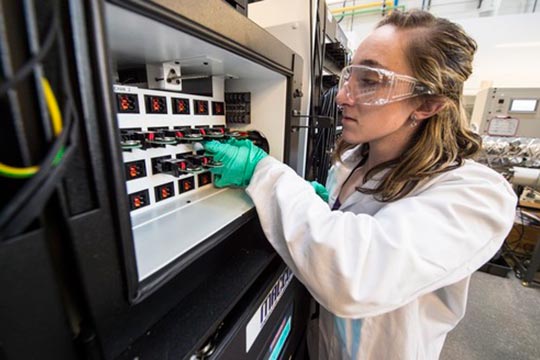
Contaminant Identification Refines Recycling for Lithium-Ion Batteries
To meet clean energy goals of the future, researchers must develop safe and sustainable recycling processes for lithium-ion batteries. As part of the DOE ReCell Center, NREL contributes to cathode relithiation technologies, binder removal and recovery, black mass purification, supply chain analysis, and thermal analysis techniques to improve the ease and recyclability of these batteries. A new approach from NREL and Argonne National Laboratory allows researchers to identify metallic contaminants and impurities that impede existing recycling methods, unlocking the potential to optimize strategies for remediation and repurification.
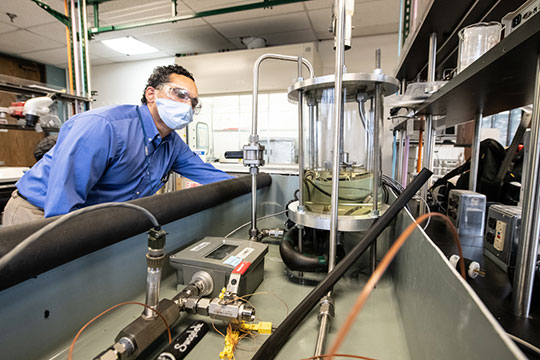
Keeping It Cool With Power Electronics and Electric Machines System Designs
NREL researchers are building advanced power electronics systems that control the flow of electricity to propel large and advanced electric machines, including those used in planes, trains, and heavy-duty transportation. With support from DOE's Advanced Research Projects Agency–Energy program, NREL is partnering on new research projects in sustainable aviation, grid storage, and energy-efficient computing. New research provides the scientific building blocks to spur innovation in transportation and advanced manufacturing with power electronics packaging, electro-thermal designs, and thermal management systems.
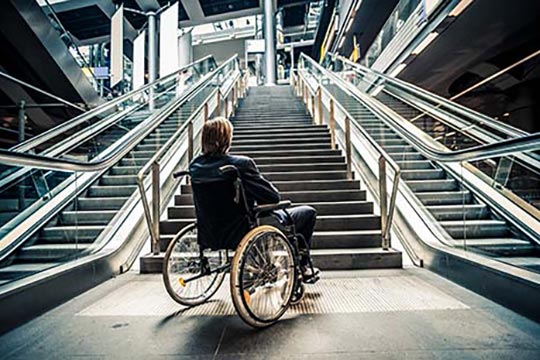
Roadblocks to Transportation Access
Underserved populations in urban neighborhoods and remote rural communities alike often have few transportation options. The dominance of automobile travel continues to skew transportation system planning today, exacerbating pollution, congestion, and health issues, along with income and racial disparities. On average, American households spend nearly 16% of their income on transportation, which can be a significant burden for low-income households. While the underlying conditions differ, wherever mobility inequity surfaces, it diminishes peoples' opportunities for success and quality of life.
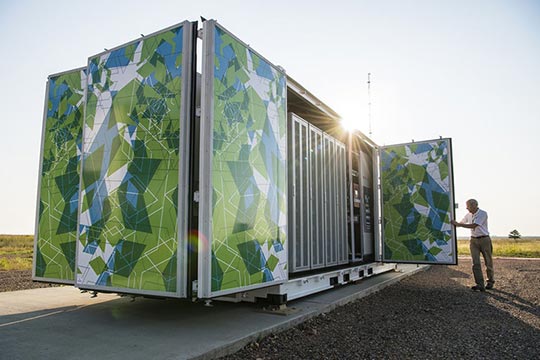
Battery Research Tackles New Challenges for Behind-the-Meter Stationary Storage Systems
Energy-efficient buildings of the future are turning to holistic behind-the-meter-storage (BTMS) system designs to minimize costs and grid impacts because of their ability to integrate EV charging, photovoltaic generation, and building demands using controllable loads to generate and store energy on-site. However, BTMS systems have different charging and discharging patterns than a typical EV and require lithium-ion battery materials that meet these unique priorities. NREL researchers recently evaluated opportunities and limitations of new battery designs featuring a lithium titanate anode and lithium-manganese oxide cathode for BTMS-specific applications.
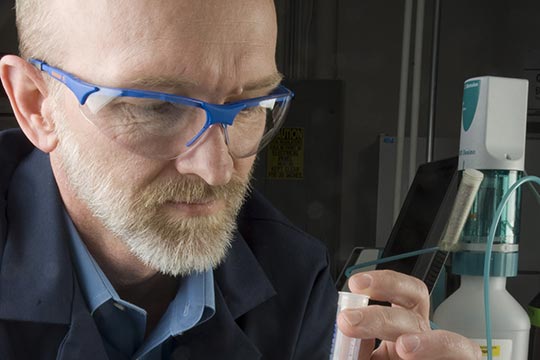
NREL Senior Research Fellow Honored for International Leadership and Innovation in Energy Chemistry
NREL's Bob McCormick received the Henry H. Storch Award in Energy Chemistry from the American Chemical Society for his research on alternative and low-carbon fuels, including the chemistry of fuel-engine interactions. The award, one of the society's highest honors, recognizes distinguished contributions to fundamental or engineering energy-related research and development, as well as education, that addresses the world's energy and chemical challenges. McCormick's leadership among peers and research into the molecular structure of fuel earned him this prestigious award.
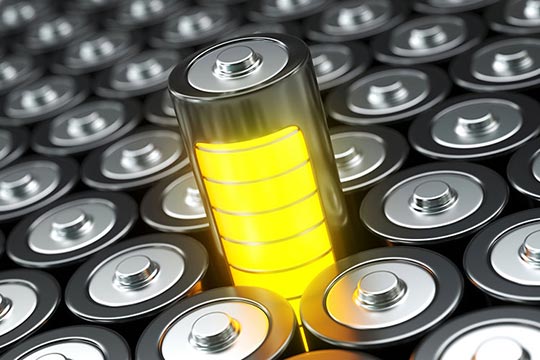
Machine-Learning Method Could Speed the Search for New Battery Materials
To discover materials for better batteries, researchers must wade through a vast field of candidates. New research demonstrates a machine-learning technique called a graph neural network that could accelerate designs for solid-state batteries, a promising next-generation technology that has the potential to store more energy than lithium-ion batteries without the flammability concerns. This approach enabled researchers to accurately predict the properties of inorganic compounds to measure the stability of their crystal structures.
Get To Know Our Team: Katherine Hurst
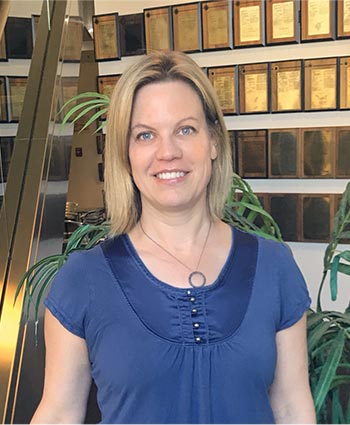
A conversation with NREL's Katherine Hurst, manager of the hydrogen production, power, and storage group.
What is your primary research focus at NREL?
My research focuses on understanding and controlling the interactions between gas molecules and solid materials. This is important in two areas of my work: gas storage and thin-film synthesis by atomic layer deposition. The surface and structure of materials can be tuned or designed to alter these interactions for applications in areas such as hydrogen storage and material durability. Measuring the kinetic and thermodynamic interactions of gas species provides performance metrics for how materials will perform as gas storage material or nucleate growth with subsequent surface chemistry.
It is exciting to consider these same challenges for hydrogen storage and material durability that are also apparent in large-scale systems integration efforts. It is really amazing to shift from thinking at the molecular scale to the megawatt scale.
In your field of research, what one mobility challenge do we need to prioritize in the next 5 years?
Hydrogen storage is a key challenge to creating an efficient, reliable, and resilient energy infrastructure. Long-term energy storage enables the use of curtailed energy and is fundamental to maximize the use of green energy. The delivery of hydrogen is also an important challenge to provide efficient access at point of use.
What sparked your interest in researching sustainable mobility?
I think it is the real possibility to help bring change to our world that motivates me. Transforming how we mobilize is enormous. However, if I can contribute a small positive change alongside my colleagues' efforts to the research field and larger scientific effort, we truly have an amazing opportunity to achieve this goal.
Why does sustainable mobility matter?
The transportation of people and goods impacts climate change, air quality, and the quality of life. By developing more energy-efficient and environmentally friendly means of mobility, I believe we can improve equality throughout the diverse areas of the world regardless of wealth, education, and geography. This can help communities experience reduced pollution as well as improvements to communication and access to food supply and health amenities. Through researching sustainable mobility, we provide the possibility of a more equitable world.
Must Reads
Predicting Cheaper Zero-Emission Electric Trucks by 2035
Transportation models, such as NREL's Transportation Energy & Mobility Pathway Options (TEMPO) model, explore long-term scenarios to project how the future of mobility might look. With continued improvements in zero-emission vehicle and fuel technologies, clean trucks are expected to become cheaper and more readily available over the next decade. In fact, by 2035, all medium- and heavy-duty zero-emission vehicles are expected to reach cost parity with conventional diesel vehicles. Learn more about the research behind these predictions—and additional pathways to decarbonization—in this NREL analysis.
Improving Power Electronics Using Silver Sintering
Medium-voltage power semiconductors can dramatically increase the power density of high-power systems, but packaging technologies need to be improved to withstand these higher operating voltages. Read how NREL researchers are experimenting with silver sintering techniques to solve this problem in the latest IEEE Journal of Emerging and Selected Topics in Power Electronics article.
Building Better Batteries—With Sulfur
Lithium-sulfur batteries are a promising "beyond lithium-ion" technology, leveraging sulfur's properties to produce lighter, cheaper batteries. Turning this chemistry into a commercial battery, however, is hampered by its reduced performance and durability. Check out how NREL is tackling this issue—and designing better batteries for the future—in this article from the Journal of The Electrochemical Society.
Did You Know?
On Jan. 27, NREL was recognized as one of the 2022 Best Workplaces for Commuters. The laboratory met the National Standard of Excellence set by Best Workplaces for Commuters by offering numerous means of support to help employees leave their cars at home. Also, with more than 120 EV charging stations at the two Colorado campuses, those who drive electric and hybrid vehicles have ample space to park and charge their cars at work.
In the News
Successful Pilot Program Inserts eBikes Into Colorado Fossil Fuel Transition
KGNU cites the NREL-developed OpenPATH tool, a human travel behavior mobile app
Over 100 low-income essential workers in Colorado are logging their use of e-bikes
to lower their transportation costs and increase their ability to get around, and
data analysis reveals that e-bikes are an up-and-coming method for replacing fossil
fuel vehicle trips on a larger scale.
Fact Check: EV Transition Does Not Require Every Gas Station in the U.S. To Go Electric
USA Today interviews Eric Wood
Charging infrastructure will not be identical to the infrastructure that serves gasoline
vehicles because many EV owners charge at home when they are not using their vehicle,
and fast charging stations will become an option for EV owners who do not have access
to charging at home.
Can Super-Fast Battery Charging Fix the Electric Car?
Wired interviews Ahmad Pesaran
Automakers are racing to deliver EVs that have range as high as 400 miles and can
charge quickly, but challenges remain with right-sizing batteries for this range capability
and addressing heat-related issues with fast charging such a battery.
Electric Cars Coming on Fast: Climate Worries, Sinking Prices Put Spotlight on EV
Sales
USA Today interviews Matteo Muratori
Americans are embracing EVs at a rate higher than ever before for reasons ranging
from cost savings to extra storage space and to the way they drive. Plummeting costs
of EVs, as well as more accessible fast charging, are contributing to this transition.
The Mobility Energy Productivity (MEP) Metric
Commutifi's "Between the Lines" podcast interviews Venu Garikapati
MEP is a recently developed metric that guides mobility planning by quantifying the
quality, abundance, and equity of transportation in a given location while accounting
for time, cost, and energy efficiency of all the travel modes that provide access
to that location.
Share
